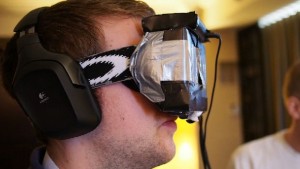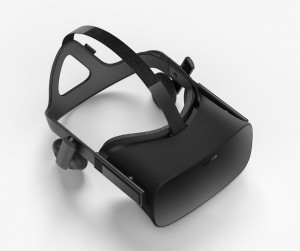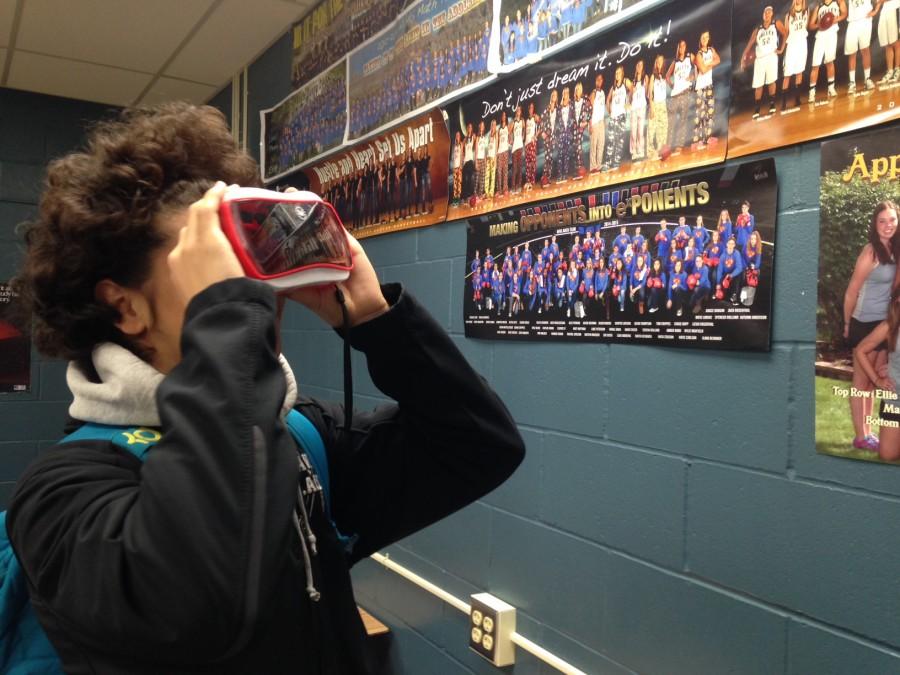Virtual Reality is No Longer Virtual
January 28, 2016
Stepping through a portal and flying around in an epic spaceship battle had seemed to be an impossible, even out of this world experience. It wasn’t until those working on the Oculus Rift first showed some of their work that consumers began to realize how close we are to virtual reality.
Now in the new year, companies are getting closer towards releasing their own whack at virtual reality. Luckily for us, there are four main organizations working on this new technology so there should be plenty of variety for all interests.
Oculus Rift
The Oculus Rift was the first to show off its prototype in an electronics expo back in 2012. Since then, Facebook started funding them, and they have evolved from a duct tape model to a comfortable set that rests on your head with built in earphones.


The Oculus Rift is designed to use a controller and is hooked up to a high-powered computer. These PCs that will be Oculus Rift compatible are estimated to be around $1000. Combine that with the $600 headset, and this setup is not cheap. The headsets are available to the public for pre-order and are expected to ship out on March 28th. Click here to explore more on the Oculus Rift
Sony PlayStation VR
The console form of virtual reality comes to us from Sony. The big difference with Sony’s VR is their multiplayer abilities. Since it is hooked up to a console, three other players can be playing on the same system. If they don’t have the headset, it’s no problem, because the display will show up on the television as normal, as well as in the headset of the user.
The PlayStation VR is scheduled to be released in June of this year and is supposed to be cheaper than the other two options already listed. For this reason, the quality is slightly worse than the Oculus Rift; for console users, however, it is probably the strongest option.
HTC Vive
The next big step in virtual reality comes from two companies, Valve and HTC, who are looking to produce a twist on this technology: the HTC Vive.
And the HTC Vive is totally outside of the box. The Oculus and other VR sets rely on sitting in one spot and just looking around. The Vive comes with two sensor boxes that go in two corners of the room you’re in. With those in place you are able to walk around and interact with the new world as if you are truly there.

Screenshot from the game ARK: Survival Evolved, a game that is said to be available for the Vive.
Using those sensors you’d be able to walk up to this dinosaur…or run away, I suppose. Of course since this technology is even more advanced, the price will be higher. There is no number that has been released yet, but Jeff Gattis, the HTC connected products marketing executive director, stated that they want “to deliver the most premium VR experience the world has seen. [Meaning] this is at the high end [of the market].” A real price will probably be released soon because the Vive is set to be available for purchase in April.
Microsoft Hololens
The final taste at virtual reality comes in the form of the Hololens from Microsoft. This device is far different from the others. It acts more like an altered pair of sunglasses than a gateway to a new dimension. With the Hololens you are able to walk around your own world, but now with holograms. These holograms can do many different things, from watching Netflix to designing a rocketship. The Hololens is the only set with non-gamers in mind.

The cool part about this is that the headset interacts with the world around you. The Hololens is its own system, meaning it doesn’t connect to a PC or a console. This is very awesome, but that then means the price will be much higher. They have yet to release a price for consumer purchase, as well as a release date. However, they are allowing developers to buy the headset in order to produce games and apps for it, which hopefully means the release date isn’t terribly far away.
Technology has advanced at an unimaginable rate. And the next revolution is nearly at our door. Virtual reality is nearly an actual reality, and it seems that whether you want to fight against dinosaurs on an abandoned island, or just watch Netflix on your ceiling, there is a type of VR that will be right for you. It’s clear that virtual reality is a part of our future.




Luke Wagle • Feb 10, 2016 at 9:42 am
VR will never take off. It’s got too many problems. We’ve been saying for years that VR will “revolutionize” the world, but (akin to Motion Controls or the Xbox Kinect), it’s cons outnumber it’s pros.
For one, VR requires developers to develop specially for it, taking time from development on the PC. You end up spending money that may not be made back, as PC has a higher audience and nearly everyone has a PC, whereas not everyone has a VR headset. From a business standpoint, VR just isn’t worth it. Considering how many VR Headsets there are, developing for one doesn’t mean it will work on another fine.
and that’s just scratching the surface.
Jordan Knobel-Piehl • Jan 28, 2016 at 8:34 am
I actually got to try out an older Oculus Rift two years ago at MineCon 2013 in Orlando and I can confirm that it is truly an amazing experience. I just hope it’ll be somewhat affordable…